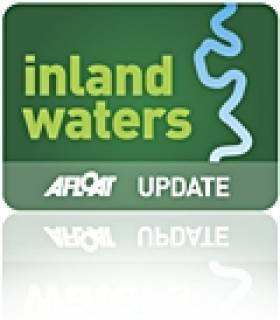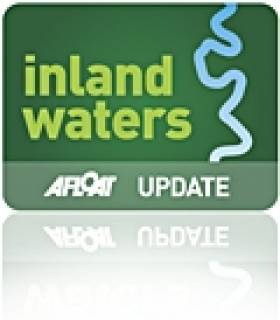Displaying items by tag: River Dodder
Funding For Grand Canal Basin Bridge In New Infrastructure Plan
#DublinPort - A new public transport bridge for Dublin’s south quays will receive more than €15 million under a new State infrastructure scheme to encourage new housing.
As TheJournal.ie reports, the proposed Dodder Bridge would span between Britain Quay and York Road at the confluence of the River Dodder and the Grand Canal — creating a more direct link between the city and the Poolbeg Peninsula, which has been designated as a Strategic Development Zone.
The move has not been welcomed by the boating community, however, as WM Nixon noted on Afloat.ie last month how such a bridge would cut off access to the Grand Canal Basin for all but the lowest clearance ‘canal boats’.
The news also comes after the Dublin Port Masterplan’s own proposals for a new north-south bridge immediately east of the Tom Clarke East Link Bridge at York Road, as previously reported on Afloat.ie.
TheJournal.ie has more on the story HERE.
Construction Firm Convicted Over River Dodder Fish Kill
#FishKill - Inland Fisheries Ireland has secured a successful prosecution of a Galway-based construction company over a fish kill on the River Dodder in South Dublin earlier this year.
Ward and Burke Construction Ltd of Stradbally East, Kilcolgan, Co Galway was convicted and fined €2,000 by Judge William Hamill at a sitting of the District Court at the Four Courts on Monday 14 October.
The judge found in favour of Inland Fisheries Ireland (IFI) who took the prosecution following its investigation into the fish kill, which saw some 500 freshwater fish - including juvenile brown trout, lamprey and stoneloach - deceased over a 2km stretch of the River Dodder in the Tallaght area from below an outfall from Boherboy Water Supply Pipeline to a point upstream of Firhouse Weir.
Giving details of the sampling and analysis undertaken, IFI fisheries environmental officer Brian Beckett confirmed the discharge from the water supply pipeline to the Dodder was characterised by seriously elevated levels of chlorine.
Beckett said that on the afternoon of 1 March 2013, he instructed staff from Ward and Burke Construction Ltd to immediately terminate the discharge, and prevent all remaining effluent residues from entering the watercourse. Ward and Burke staff were found to be fully co-operative at all times during the investigation.
Legal representatives for Ward and Burke who had earlier told Judge Hamill there was a plea in the matter said that the discharge occurred as a result of human error, and as soon as this had come to their attention they had taken steps to prevent any further discharge.
It was also submitted that the construction firm had committed to provision of a sum of money to cover restocking or other appropriate costs to mitigate against damage caused as a result of the discharge.
Judge Hamill convicted Ward and Burke Construction Ltd and imposed a fine of €2000 and awarded legal costs and expenses to Inland Fisheries Ireland.
River Dodder Fish Kill Investigation Continues
#FishKill - Inland Fisheries Ireland (IFI) staff are continuing their investigation into the deaths into some 500 freshwater fish in the River Dodder late last week.
The fish kill is now thought to cover a 2km stretch of the river in the Tallaght area of south Dublin, and species affected include adult and juvenile brown trout, lamprey and stoneloach.
According to the IFI, live fish were recorded immediately upstream and downstream of the affected area.
As previously reported on Afloat.ie, the fisheries body is following a definite line of enquiry regarding the source of the contamination that caused what Redmond O'Hanlon of the Dodder Anglers Group called the worst fish kill he had witnessed "in 30 years".
Fish Kill in Tallaght Investigated
#InlandWaterways - Reports indicate that as many as 500 freshwater fish of various species have been found dead in the River Dodder in Tallaght, south Dublin.
The fish kill was discovered on Friday evening upstream of the Old Bawn bridge, and according to the Irish Independent, Inland Fisheries Ireland says samples have been taken from the scene - and that a possible source has been identified.
However, the fisheries body refused to comment on speculation that the fish kill was a result of discharge from industrial waste or illegal dumping.
The fish kill covers a 600-metre stretch of the river in the south Dublin suburb.
Speaking to The Irish Times, Redmond O’Hanlon of the Dodder Anglers Group said it is the worst fish kill he has witnessed "in 30 years".


























